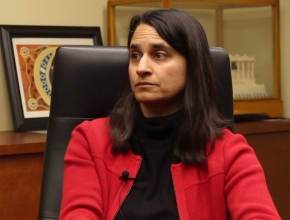How can we balance the risk of recurrent venous thromboembolism following an episode of unprovoked VTE and the increased bleeding risk associated with continued anticoagulation?
James Douketis: This is a really important question because 50% of people who develop venous thromboembolism—a very common disease—have an unprovoked or idiopathic form of it. In those patients it is not clear—do you treat them for 3 months or do you continue indefinitely? We know that there is no advantage to treating them for 6 months or 12 months. The question is, “Is it going to be a short interval, 3 to 6 months, or indefinitely?” That is a difficult decision to make. Obviously, it will involve looking at the patient as an individual because patients may be at advanced age, which places them at increased risk for bleeding, or they may have other comorbid conditions like serious lung disease or heart disease, which places them at increased risk of dying from a recurrent fatal pulmonary embolism.
What we have to help in our decisions are, what we call, 3 clinical decision rules. They have been validated either retrospectively or prospectively. And these are: firstly, the Vienna prediction rule—not too far from here, from Kraków—and there is the DASH score that was developed by a research consortium in Europe, and there is the HERDOO2 score, which is developed in North America. What all these prediction rules have in common—and you can go online and google them and find them—is that the decision about whether somebody has an increased risk for thromboembolism is anchored on patient age, sex, and D-dimer levels; those 3 factors are involved in all the rules.
Generally speaking, men who have a positive D-dimer result after they stop anticoagulation are at the highest risk for thromboembolism, and women with a negative D-dimer are at the lowest risk. And then there is going to be that in-between group. For those high-risk and low-risk groups it is pretty easy. It is in that in-between group where I often talk to the patients and get their views, because some of them can accept the risk of recurrent thrombosis and they would rather not be on a blood thinner; in other patients it is the reverse. Of course, you also want to weigh in the decision about bleeding risk but remember that we are dealing with patients who have now finished 3 to 6 months of anticoagulation, so their baseline risk for bleeding is going to be pretty low because they have already received anticoagulation. That has some effect looking at long-term bleeding risk but it is not as important. Overall, you want to try to keep people on anticoagulation. Now there are new studies that show you can use reduced-intensity anticoagulation to provide protection against disease recurrence and not increase the risk for bleeding—so there are some choices.
Ultimately, the management can be helped by clinical prediction rules, but it has to be based on an individual assessment of the patients’ clinical characteristics and their values and preferences in terms of wanting to stay on a drug like an anticoagulant or not.
 English
English
 Español
Español
 українська
українська











